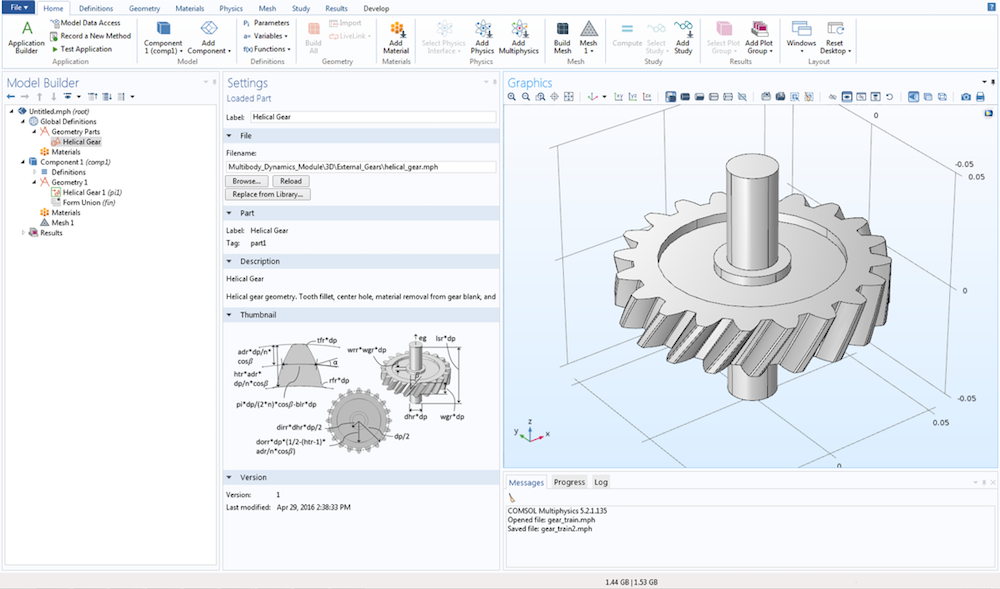

This can be done, for example, by a global evaluation of the parametric data set. Hence, we can extract and postprocess the individual design changes for the different materials. This study controls the material assignment and runs individual optimization procedures for each by starting Study 2 automatically. With all the discussed adjustments, we can now run the multimaterial optimization study by computing Study 3. Optimizing a Tuning Fork for Various Materials in COMSOL Multiphysics Use of an additional study to create nested studies. For that, we leave Study 2 containing the optimization as is. This is possible as long as all entries are globally available. In the Optimization node, we can define the settings needed for the optimization. Therefore, we add an additional empty study and fill it with a Material Sweep node and a study reference pointing to the optimization study. To perform a parametric or nested optimization, we can call a study containing an Optimization node from inside another study via a Study Reference node. These study nodes tend to control the same solver settings and are therefore incompatible with each other.

Setting the material sweep directly in the study is not supported, since it is only possible to use one Sensitivity, Optimization, Parameter Estimation, or Parametric/Material/Function Sweep study step in each study. The good news is that there is another way of achieving this by using Study References, as explained below. In contrast, when we try to add a material sweep to the optimization study for Study 2, we get an error message. Various sweeps can be combined easily within a study, such as the extension of Study 1 with a material sweep. For example, we can look at the eigenfrequency and confirm that the eigenfrequency changes with different materials and arm lengths. Due to the combination with a material sweep, the studies can now solve the physical model for all chosen materials and it is possible to analyze all of the results together. Now that we transformed the original model into a multimaterial model, we can adjust the studies. Setting the material switch for a multimaterial analysis. The switch is assigned to the solid domains of the tuning fork. We can add available materials from the built-in Material Library, including: Further, this switch is needed to work with the material sweep in the Study node, as described later in this blog post. This option allows us to set and test various materials for the model. Let’s return to the initial question: How does the tuning fork’s arm length depend on the material for a tune of 440 Hz?įirst, we extend the model with a material switch. Tuning Fork model showing the original settings to search for a tune of 440 Hz via two different strategies. In contrast, the second study applies a mathematical optimization algorithm that uses L as the control variable and the deviation from the target frequency as the optimization objective for fast, precise, and efficient optimization. The first study uses a parametric sweep of the tuning fork’s arm length, set as a parameter L, to find the optimal design for 440 Hz. Both studies perform an eigenfrequency analysis to search for the eigenfrequency around 440 Hz. This model features a parametric geometry, material properties of steel, the Solid Mechanics interface, and two studies. For this blog post, we’ll start with the simple Tuning Fork model (and accompanying example app).
INTRODUCTION TO COMSOL MULTIPHYSICS 5.3 SOFTWARE
You can access the Application Library within the COMSOL® software GUI in the File menu and search the keyword “tuning fork”. The Application Library contains several models featuring a tuning fork geometry, as well as a tuning fork simulation app. Performing an Optimization Study for Multiple Materials This made me think: What if we change the geometry and material of a tuning fork to reach the desired frequency?Ī tuning fork. An article in JOM discusses how the frequency of a tuning fork changes with different materials and a fixed geometry ( Ref. Tuning forks are made out many different materials, but most of them are calibrated to a standard pitch of 440 Hz for an A note.
INTRODUCTION TO COMSOL MULTIPHYSICS 5.3 HOW TO
In this blog post, learn how to combine sweep studies with the built-in optimization functionality.Īchieving the Ideal Frequency of a Tuning Fork However, precise and innovative simulation results also call for mathematical optimization. You can perform several different types of sweeps in the COMSOL Multiphysics® software, including function, material, and parametric sweeps. Sweeps are very useful for characterizing a system and learning more about how different input values impact the results.


 0 kommentar(er)
0 kommentar(er)
